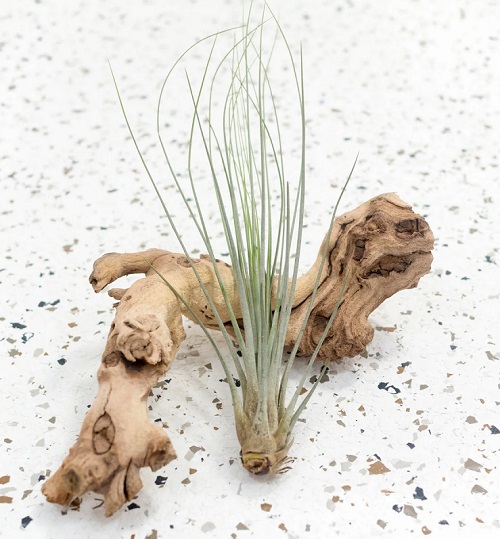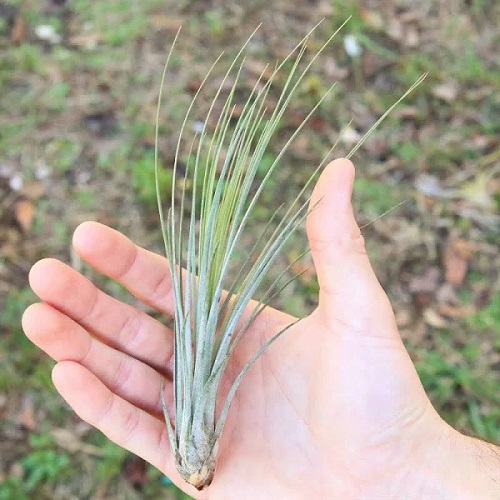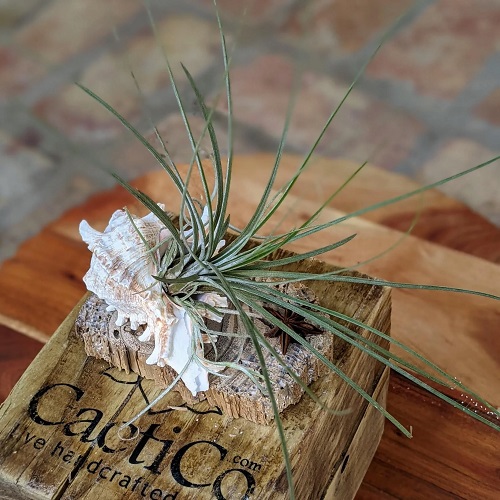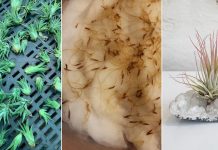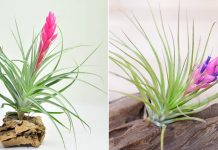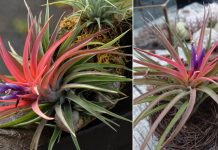Discover the Perfect Way of Air Plant Juncea Care: Learn to nurture these fascinating plants and watch them thrive in your home.
Read Air Plant Juncea Care, a fascinating and resilient plant. In this guide, you’ll unravel the secrets to effortless care, making it a perfect companion for both seasoned gardeners and beginners.
Explore the Tips for Air Plant Care here
Air Plant Juncea Information
Air Plant Juncea, scientifically known as Tillandsia Juncea, belongs to the Bromeliaceae family. Native to the southeastern United States, Mexico, and Central America, it thrives in warm climates. This air plant features slender, tube-like leaves, typically reaching a height of 6 to 10 inches and a spread of 1 to 2 inches.
While it can produce small purple flowers, its primary attraction is its green, slender foliage. Air Plant Juncea is slow-growing and prefers bright, indirect light, making it a suitable choice for indoor or outdoor decoration in well-ventilated areas. Water it by misting or soaking it weekly for optimal health and growth.
Botanical Name: Tillandsia juncea
Read About Do All Air Plants Bloom here
Air Plant Juncea Propagation
Propagating Air Plant Juncea can be a rewarding way to expand your air plant collection or share these unique plants with others.
Here’s a step-by-step guide on how to propagate Juncea Air Plants through offsets:
- Inspect your adult plant carefully, and you’ll likely notice small offsets (pups) growing at the base of the parent plant. These pups will have their own set of leaves and may be of varying sizes.
- Set up a clean workspace and gather your materials. It’s essential to work with clean tools to minimize the risk of infection or damage to the plants.
- Using clean scissors or pruning shears, gently snip the pups from the parent plant. Be sure to cut as close to the base of the parent plant as possible without damaging the offsets.
- After separation, place the pups in a dry and well-ventilated area for a few hours to allow the cut ends to callus. This helps prevent rotting when they are exposed to moisture.
- Once the cut ends have been calloused, plant or mount the pups as desired. You can attach them to a new mounting surface, such as driftwood, rocks, or decorative containers, using non-toxic glue or wire.
- After planting or mounting the pups, resume their regular care routine. Mist or soak them every 1-2 weeks, ensuring they dry completely between waterings. Place them in an area with bright, indirect sunlight.
- Over time, the pups will grow and develop their roots, eventually becoming mature Juncea Air Plant.
Learn About Do Air Plants Need Sun here
How to Display Air Plant Juncea 
1. Choose a Display Surface
Select a suitable display surface that complements the aesthetics of your Juncea Air Plants. Popular options include driftwood, rocks, seashells, wireframes, glass orbs, and decorative containers like vases or bowls.
2. Prepare the Surface
Ensure that the chosen display surface is clean and free from dust or debris. If you’re using porous materials like driftwood or rocks, make sure they are thoroughly dry to prevent mold or mildew growth.
3. Attach the Air Plants
There are two primary methods for attaching Air Plants to your chosen surface:
a. Using Non-Toxic Adhesive: Apply a small amount of non-toxic adhesive to the base of the air plant. Press the glued base firmly onto the display surface. Hold it for a minute or two to allow the glue to set. Be careful not to use too much glue, as it can overflow onto the plant and damage it.
b. Using Wire: If you prefer a more flexible approach, you can use a thin wire to secure the air plants to the display. Gently wrap the wire around the base of the air plant and twist it to secure it to the display surface. Ensure the wire is tight, allowing the plant to breathe and grow.
4. Enhance with Decorative Elements
Add decorative elements to enhance the visual appeal of your Juncea Air Plant display. This could include placing moss, sand, pebbles, shells, crystals, or other small ornaments around the base of the air plant.
5. Choose the Right Location
Position your Juncea Air Plant display in a location with bright, indirect sunlight. These plants thrive in filtered light conditions. Avoid direct sunlight, as it can cause the plants to become sunburned.
6. Rotate Your Display
To ensure even growth, rotate your display every few weeks to expose different sides of the air plants to light.
Read About 11 Amazing Benefits of Air Plants here
Feeding Air Plant Juncea
Feeding Juncea Air Plant with a water-soluble, diluted fertilizer designed for air plants or bromeliads is a valuable practice to enhance their health and vitality. Dilute the fertilizer to about one-quarter to one-half of the recommended strength and apply it by either misting the plants during their active growth periods, typically in spring and summer, or by briefly immersing them in the diluted solution. Regular monitoring for signs of over-fertilization is essential, and rinsing the plants under gentle running water can help remove excess fertilizer residue.
Air Plant Juncea Care

Position
Place your Juncea Air Plant in a location with bright, indirect sunlight. They thrive in filtered light, making them ideal for windowsills with sheer curtains or under bright artificial light. Avoid direct sunlight, as it can scorch the leaves.
Airflow
Ensure good air circulation around your air plants. Proper airflow helps prevent mold and promotes healthy transpiration through their trichomes. You can use fans or open windows to improve ventilation.
Water
Try to water your Juncea Air Plants every 1-2 weeks by soaking them in non-chlorinated water for 20-30 minutes. Ensure the water is at room temperature. After soaking, gently shake off excess water and allow the plants to dry thoroughly, ideally within 4 hours.
Temperature
Juncea Air Plants prefer temperatures between 10°C to 32°C. They can tolerate occasional temperature fluctuations but should be protected from extreme cold.
Pests and Diseases
These Air Plants are relatively resistant to pests, but occasionally, they may be affected by mealybugs or spider mites. Isolate affected plants and treat them with a diluted neem oil solution or insecticidal soap.
They are susceptible to rot if they are consistently overwatered. To prevent rot, ensure proper drying after watering and avoid letting water sit in the plant’s base. Trim any damaged or rotting parts promptly to prevent the spread of the disease.
Frequently Asked Questions
Q. How often should I water my Juncea Air Plants?
Juncea Air Plants should be soaked in water for 20-30 minutes every 1-2 weeks. Additionally, mist them 2-3 times a week to maintain humidity. Adjust the watering frequency based on your local climate and indoor conditions.
Q. Can I display Juncea Air Plants in decorative containers?
You can display Juncea Air Plants in decorative containers, ensuring good airflow and drainage. Mounting them on surfaces like driftwood, rocks, or wireframes is also a popular and attractive way to display these plants.
Q. How do I encourage blooming in my Juncea Air Plants?
These Air Plants typically bloom when they reach maturity, but the frequency may vary. To encourage blooming, provide proper care to them. Blooms often appear during the spring and summer months.
Q. Can I place my Juncea Air Plants outdoors?
You can place them outdoors in a shaded or partially shaded area. However, protect them from extreme weather conditions. Outdoor placement can expose them to natural sources of nutrients carried by the wind, benefiting their growth.

